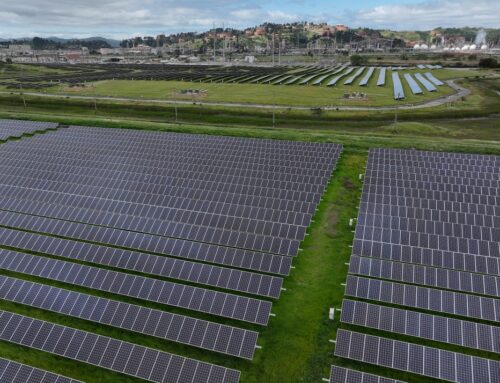Improve Very Performance! Here’s The Implementation Of AI In The Renewable Energy And Effi
October 26, 2025
YOGYAKARTA – The implementation of AI in the renewable energy sector and efficiency has been an important milestone in accelerating the transition to cleaner and more sustainable energy. With its ability to analyze data quickly and accurately, AI can optimize various aspects in production, distribution, and consumption of renewable energy.
This article discusses how AI can be applied to increase renewable energy efficiency and accelerate its utilization in various sectors, as well as examples of AI that have been implemented.
The renewable energy sector, such as solar power and wind, faces challenges in terms of production uncertainty due to changing weather factors. AI can help by predicting weather patterns and optimizing energy production based on these data. Through a large analysis of data, AI can predict when and where renewable energy can be produced optimally, thereby increasing efficiency and reducing waste.
Examples of AI Implementation:
Google DeepMind: Google has developed AI technology through DeepMind to predict energy production from their wind fields with high accuracy, which allows increased efficiency by up to 20%. This AI analyzes weather data to determine when wind turbines should operate at their maximum capacity.
AI can also improve the management of more distributed renewable energy networks. Renewable energy networks often involve scattered energy resources, such as household solar panels or wind turbines in various locations. AI allows better monitoring and management of these renewable energy sources by using an intelligent management system that can predict energy overload and optimize energy distribution to consumers.
Examples of AI Implementation:
Grid Edge: The company uses AI to manage renewable energy networks in the UK, maximize renewable energy use and reduce dependence on fossil energy sources. This technology also allows more efficient integration of renewable energy sources and reduces energy waste.
In addition to the production and energy distribution sector, the implementation of AI in the renewable energy sector and efficiency can also be applied in the industrial sector to reduce energy consumption and increase operational efficiency. For example, AI can be used to monitor and analyze patterns of energy consumption in the industry to identify wasteful areas and provide recommendations for energy savings.
Examples of AI Implementation:
Uptake Technologies: The company is developing an AI-based platform that analyzes data from various sensors to increase energy efficiency in the industrial sector. This AI can provide useful insights to reduce energy consumption and improve equipment performance.
Predictive maintenance is one area where AI can provide great benefits. In the renewable energy sector, such as wind fields and solar panels, timely maintenance is essential to ensure the system remains operational at optimal capacity. By using AI to analyze sensor data, we can predict when equipment needs to be repaired or replaced, thereby reducing stop times and increasing system life.
Examples of AI Implementation:
Siemens AI: Siemens uses AI to analyze data from wind turbines and solar panels to predict technical problems prior to damage. This technology helps companies keep renewable energy assets in optimal condition and reduce maintenance costs.
Energy storage is a huge challenge in the renewable energy sector, as energy production cannot always be adjusted to demand. AI can assist in managing energy storage systems, such as batteries, by optimizing charging time and energy emptying based on demand predictions and energy production.
Examples of AI Implementation:
Tesla’s Powerwall: Tesla uses AI in their energy storage systems to manage the use and charging of Powerwall batteries, which store energy from solar panels for use at night. AI helps maximize energy storage and reduce waste by predicting when energy will be used and recharged.
Implementation of AI in the renewable energy and efficiency sector has brought about major changes in the way we take advantage of renewable natural resources. With its ability to analyze large amounts of data, AI allows us to increase efficiency, optimize energy production, and minimize waste. Technology such as Google DeepMind, Grid Edge, Uptake Technologies, Siemens AI, and Tesla Powerwall demonstrate how AI can be applied to accelerate the adoption of renewable energy and create more efficient and sustainable energy systems. Read also: Application of Artificial Intelligence in Energy Sector Offers Innovation Potential
Going forward, with AI technology growing, we can hope that the renewable energy sector will be more efficient and more integrated with the world’s energy needs, as well as help reduce the impact of increasingly real climate change.
Through the implementation of AI in the renewable energy and efficiency sector, the world can move closer to a sustainable future by maximizing the use of renewable energy and increasing energy efficiency globally.
So after knowing the implementation of AI in the renewable energy sector and efficiency, see other interesting news on VOI.ID, it’s time to revolutionize news!
The English, Chinese, Japanese, Arabic, and French versions are automatically generated by the AI. So there may still be inaccuracies in translating, please always see Indonesian as our main language.
(system supported by DigitalSiber.id)
Search
RECENT PRESS RELEASES
Related Post


